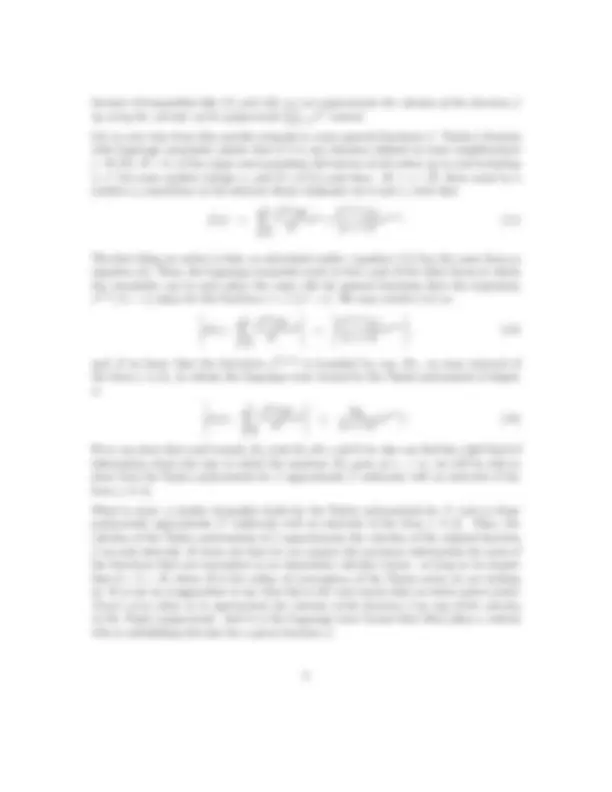



Study with the several resources on Docsity

Earn points by helping other students or get them with a premium plan


Prepare for your exams
Study with the several resources on Docsity

Earn points to download
Earn points by helping other students or get them with a premium plan
Community
Ask the community for help and clear up your study doubts
Discover the best universities in your country according to Docsity users
Free resources
Download our free guides on studying techniques, anxiety management strategies, and thesis advice from Docsity tutors
Taylor Polynomials: The Lagrange Error Bound. Louis A. Talman. Department of Mathematical & Computer Sciences. Metropolitan State College of Denver.
Typology: Study notes
1 / 3

This page cannot be seen from the preview
Don't miss anything!


In order to understand the rˆole played by the Lagrange remainder and the Lagrange error
bound in the study of power series, let’s carry the standard examination of the geometric
series a little farther than is usually done. That standard examination usually ends with
the observation that
∑^ n
k=
x
1 − x
n+
1 − x
and so the sums on the left side of (1) converge to f (x) = 1/(1 − x) iff |x| < 1. Of course,
this conclusion arises from the fact that the limit on the right-hand side exists iff |x| < 1.
But (1) contains other information from which we can learn a great deal more about the
convergence of the geometric series.
Let us begin by rewriting (1) as
∑^ n
k=
x
1 − x
x
n+
1 − x
This latter equation can be rewritten in two different ways:
1 − x
∑^ n
k=
x
k
x
n+
1 − x
, and (2)
1 − x
∑^ n
k=
x
x
n+
1 − x
Notice that equation (2) has the form
f (x) =
∑^ n
k=
akx
k
This is exactly the form that we see in Taylor’s formula with Lagrange remainder, which
we will state very soon. But let us defer thoughts connected with this observation for a
while.
It is equation (3) that we want to deal with now. Let h be any number with 0 < h < 1. If
x ∈ [−h, h], then x ≤ h < 1, so | 1 − x| = 1 − x ≥ 1 − h. This guarantees that
| 1 − x|
1 − x
1 − h
Consequently, we may write, from (3) and (5),
1 − x
∑^ n
k=
x
k
x
n+
1 − x
h
n+
1 − h
no matter what the number x ∈ [−h, h] may be. Thus, on any interval of the form [−h, h],
where 0 < h < 1, the values of the polynomial
n k=0 x
k approximate the values of the
function f : x 7 → 1 /(1 − x) uniformly well.
This turns out to be an extremely important piece of information. It has among its conse-
quences the fact that if 0 < h < 1 the definite integrals of the polynomials 1 + x + · · · + x
n
on intervals [x 1 , x 2 ] ⊆ [−h, h] approximate the definite integrals of f well.
Now let’s note that
d
dx
1 − x
(1 − x)^2
An analysis very similar to the one above, but of the polynomials
d
dx
∑^ n
k=
x
∑^ n
k=
kx
k− 1 , (9)
yields—when 0 < h < 1—the inequality
∣ ∣ ∣ ∣ ∣
(1 − x)^2
∑^ n
k=
kx
k− 1
h
n [(1 + h)n + 1]
(1 − h)^2
valid for every x ∈ [−h, h]. The fraction on the right side of (10) goes to zero as n grows
without bound (use L’Hˆopital’s rule together with the fact that |h| < 1 to see this), and
so the derivatives of the polynomials
∑n
k=0 x
k approximate the derivative of the function
f uniformly well on any interval of the form [−h, h], where 0 < h < 1. In other words,